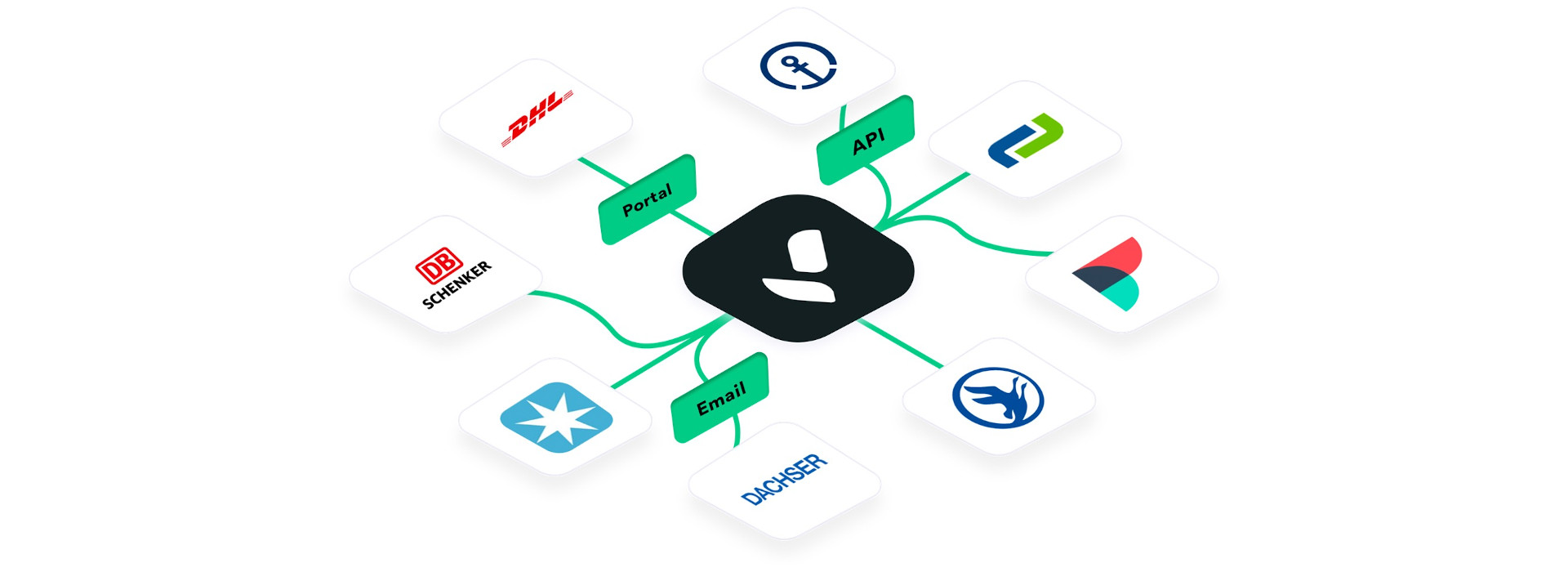This offer is only addressed to commercial customers. All prices are exclusive of value added tax (VAT).
gryn


PRODUCT OVERVIEW
gryn helps businesses to take their Scope 1/3 carbon reporting into their own hands, without wasting time and additional resources.
The gryn solution offers an affordable and easy to use solution to receive primary data from your Logistics service providers, taking away the need to manually collect various reports in different formats. gryn takes care of the validation, cleansing, standardization, and reporting of the data, ensuring a high standard of data quality. Our automated solution lifts the reporting process on a higher level and allows you to use our standard for your decision making.
PRODUCT FEATURES
Scope 1/3 reporting by gryn helps businesses to reach their carbon emission targets and take decisions based on high quality primary data

Collaborative Climate Action
Connect and collaborate with your suppliers to collect real-time Scope 1 / 3 carbon emissions for your transport operations and assess compliance through the unique AI powered rating system.
Collaborate internally cross functional with procurement, supplier management and sustainability teams by simplifying reporting through data sharing and by gaining actionable insights on hot spots to reduce climate impact of Supply Chains.
.svg)
Get the visibility you need
The intuitive and easy to use gryn User Interface delivers instant visibility with all relevant KPI‘s on your carbon emissions across all Mode of Transport, Business Units and Logistics Service Providers.
Simply share your carbon footprint by inviting unlimited number of users, export the data or interface via API with your Sustainability Management System, BI solution or Procurement Platform.

Good decisions require high quality data
gryn is a collaboration platform as data space to share, assess, score and rate carbon emissions from Logistics Service Providers to obtain consistent, standardized, trustworthy and compliant data sets for Scope 1 / 3 reporting. gryn verifies the accuracy of data sets provided and validates against applicable frameworks and regulations to deliver data and supplier scoring.
Shipper and supplier get the same actionable insights to continuously improve data accuracy and to start and proof decarbonization measures. Together.
Only with high quality data you can take high quality strategical decisions for your supply chain.

Be consistent and compliant with confidence
gryn is built to comply with leading methodologies, regulations and international accounting standards
We combine our unique technique of data assessment, sustainability survey and validation rules to create visibility on your carbon emissions, so that Scope 3 data can be shared for reporting with confidence in full compliance.
Our mission are AI based audits to certify reasonable assurance of carbon emissions.
HAVE QUESTIONS?
We are always here to answer them. Some frequent ones being...
GRYN calculates emissions with the help of third parties and presents them in a processed form.
No problem! Gryn can integrate with existing accounts and pull in data from those sources.
We offer monthly reports, allowing you to take actions on demand.
There are two options, first use the file upload via gryn.com. Just drag and drop your shipment data in Excel or CSV format, match your headers and your data will be uploaded and visible on the shipment page in gryn. Second option is through our API.
One file contains one sheet where the data starts in the first row with the headers. The naming of the headers is not superficial, because they will be matched later anyway. Each row describes one route of a particular cargo. For a different mode of transport (MoT) we need a separate file for now (we are working on a solution to import multiple MoTs at once).
Yes, we are more than open to connect to any Sustainability Management, Transport Management, BI solutions, or similar solutions. Via API we can also set up a live communication.
The Data Score helps to understand the density and quality of your own data or the data of your contacts. It provides information about the current status and potential for improvement.
The more precise your input data are, the higher the data score. The importance and quality of a given information is a crucial factor.
- Default data = industry average figures using standard assumptions of vehicle efficiency, load factor and empty running, may lead to results that over- or underestimate emissions compared with actual conditions
- Modelled Data = Models combine shipment data with information on vehicles and fleets in order to model fuel use and emissions, using available information on goods types, consignment sizes, journey origin, destination, intermediate handling locations, vehicles used, load factors, etc. Assumptions based on default data, rather than primary data, will lower the validity of the output
- Primary Data = good quality actual data of fuel use or emissions, used by transport or logistic site operators to calculate its Scope 1 carbon emissions, transport buyers should collect primary data from carriers for Scope 3 emissions accounting. Leads to most accurate emissions calculation